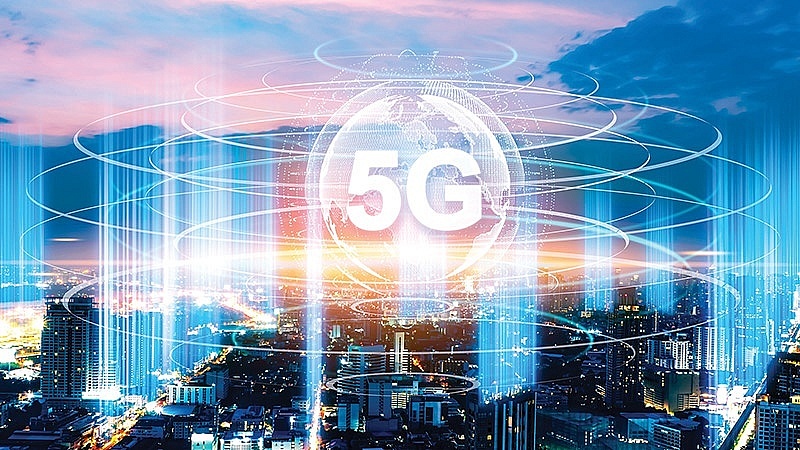5G subscriptions in Southeast Asia and Oceania expected to double in 2022
 |
According to the report, as more network deployments take place over the next few years, 5G mobile subscriptions are expected to grow at an annual rate of 83 per cent, reaching 570 million in 2027. This figure will almost equal to the total regional number of 4G subscriptions at that time.
Denis Brunetti, head of Ericsson Vietnam, Myanmar, Cambodia, and Laos states, "With our global scale and expertise, we look forward to continuing our journey in supporting Vietnam with expanded deployments of 4G and 5G networks moving forward. 4G and 5G are enabling Vietnam to unlock the full potential of the Fourth Industrial Revolution and will be the foundation upon which Vietnam can further build on its digital transformation journey.”
The latest Ericsson Mobility Report forecasts that North America will lead the world in 5G subscription penetration in the next five years with 90 per cent of mobile subscriptions in the region expected to be 5G by 2027.
The report also predicts that current global 5G subscriptions will pass the one billion milestone by the end of 2022. 5G is forecast to account for almost half of all subscriptions by 2027, topping 4.4 billion subscriptions.
The 2027 timeline also includes projections that 5G will account for 82 per cent of subscriptions in Western Europe; 80 per cent in the Gulf Cooperation Council region; and 74 per cent in Northeast Asia.
Fredrik Jejdling, executive vice president and head of Networks at Ericsson said, “The latest Ericsson Mobility Report confirms 5G as the fastest growing mobile technology generation ever, and Ericsson is playing a key role in making it happen. We work every day with our customers and ecosystem partners around the world to ensure that millions more people, enterprises, industries, and societies enjoy the benefits of 5G connectivity as soon as possible.“
Other findings of the Ericsson Mobility Report
5G is scaling faster than all previous mobile technology generations. About a quarter of the world’s population currently has access to 5G coverage. Some 70 million 5G subscriptions were added during the first quarter of 2022 alone. By 2027, about three-quarters of the world’s population will be able to access 5G, according to the report.
Mobile data traffic per smartphone continues to grow strongly and is expected to reach around 45GB per month in 2027 – a growth rate of 30 per cent annually. Total mobile data traffic is expected to grow by a factor of around 6 between 2021 and 2027, driven by continued strong growth in 4G subscriptions and increasing 5G subscription uptake in several markets.
Wider 5G adoption and new services are expected to drive traffic growth in the latter part of the forecast period up to 2027.
Fixed Wireless Access (FWA) is playing an increasingly important role in the delivery of broadband services. Ericsson predicts that the number of FWA connections will exceed 100 million in 2022, a figure that is forecast to more than double by 2027, reaching almost 230 million.
On IoT, the report notes that in 2021, broadband IoT (4G/5G) overtook 2G and 3G as the technology that connects the largest share of all cellular IoT-connected devices, accounting for 44 per cent of all connections.
Massive IoT technologies (such as NB-IoT and Cat-M) increased by almost 80 per cent during 2021, reaching close to 330 million connections. The number of IoT devices connected by these technologies is expected to overtake 2G/3G in 2023.
What the stars mean:
★ Poor ★ ★ Promising ★★★ Good ★★★★ Very good ★★★★★ Exceptional
Themes: Digital Transformation
Related Contents
Latest News
More News
- Human-centred governance seen as key to AI development (December 19, 2025 | 18:19)
- Top 10 notable events of Vietnam’s industry and trade sector in 2025 (December 19, 2025 | 14:00)
- Tungsten surges to 12-year high as world enters a new 'black gold' race (December 18, 2025 | 17:27)
- Vietnam’s coffee exports set new record despite price pressures (December 18, 2025 | 17:13)
- Garment and textile sector seeks new growth after volatile year (December 18, 2025 | 17:01)
- VinSpeed and Siemens strengthen cooperation for high-speed rail development (December 18, 2025 | 16:53)
- High-tech adoption for TH true MILK (December 18, 2025 | 13:39)
- Takeda supports health resilience amid climate change challenges (December 18, 2025 | 12:39)
- Mondelez Kinh Do - a chapter of purpose-led leadership in Vietnam (December 18, 2025 | 09:44)
- VNPAY services receive the highest-level PCI DSS international security certificates for six consecutive years (December 17, 2025 | 23:47)

 Tag:
Tag:

























 Mobile Version
Mobile Version